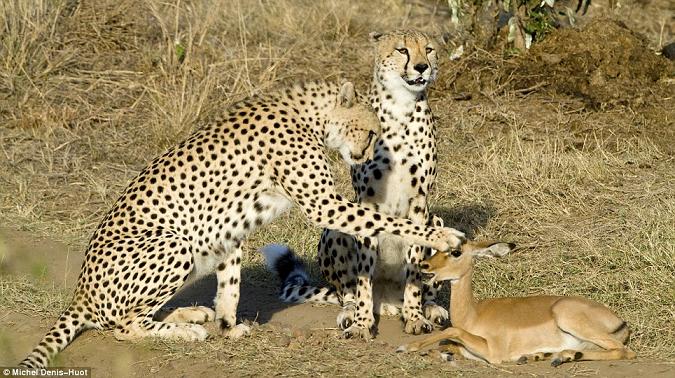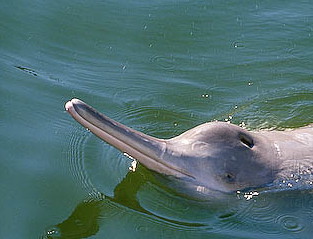Hunting played a very important role in human civilization.It was an act of necessity in the early days of civilization for food and clothes. For thousands of years human hunted wild animals only for food and skin. Slowly our civilization flourished, humans came out of caves, jungles and hunting got a new meaning. In medieval age hunting of wild animals were done to protect human communities from wild attacks. It was considered as an act of fun, entertainment and sport among the aristocrats and royal families. But very soon we spread across every territory in the planet, leaving minimal space and population for the other species. This forced all authorities in the modern era to consider hunting as crime. The meaning of hunting turned upside down, it is no more needed to protect humans, instead it should be stopped to protect the wild. The word itself got a new name and now called as poaching.
During the transition for modern era, there are many hunters who turned themselves into conservationists in later part of their lives. In fact hunters were the early conservationists. Hunters are wild animal behaviors and their habitats very closely. Even many species discoveries go to the hunters. Some of them were real researchers of wild animal behaviours too. We have learnt a lot from the writings of the hunters about many valuable species.
In this series of articles we are covering history of some of the well known hunters who were also conservationists and did commendable job to protect the beautiful wild.
Devanampiya Tissa (250 BC)
The King of small island country Srilanka in Asia, Devanampiya Tissa, was the founder of the first ever known wildlife sanctuary in human history. If we want to date back this sanctuary, it will go beyond 2500 years from now! Like any other kings of those days, he was a hunter. It was a leisure sport for him in his initial days. One day while hinting a deer in Mihintale, Tissa was sighted by Indian emperor Ashoka’s son Arahath Mahinda. Mahinda was a Budhdhist missionary monk and he stopped the king in the track and preached to him that all mammals, birds and other creatures enjoy an equal right to live in this land, wherever they may want. The land belongs to all the people and animals. The king is only the ruler and not the owner of this land. The monk’s words really impressed the king and he not only took Budhdhism as his religion also renounced the pleasure of animal hunting. Mahinda also advised King Devanampiya Tissa to designate Mihintale and the surrounding jungle areas as a sanctuary for wildlife.

The first Wildlife Sanctuary in human history still exists in Srilanka
William Cornwallis Harris(1807 – 1848)
Sir William Cornwallis Harris was an English Millitary Engineer by profession. But he is known as a hunter and animal artist. Born in Wittersham, Kent, in 1807, Harris was educated at a military college and went at the age of 16 to India as a Second Lieutenant in the East India Company’s Engineers. He remained there for the next thirteen years, using his leisure for hunting and the sketching of animals. But he got ill there and sent to Capetown for recovery. With a civil servant friend from India, he resolved to penetrate into the African bushveld far beyond the borders of the colony. He made a trek in 1836-37 through unexplored country as far as the residence of the Matabele chief, Moselekatse. Harris obtained reluctant permission to return to the Colony via a little known south-eastern route. Here he had some fine elephant, rhinoceros and buffalo hunting.
On his return to India, Harris published his Narrative of an Expedition into Southern African soon afterwards re-issued in London as The Wild Sports Southern Africa (1939). The standard Encyclopaedia of Southern Africa describes this as the first book by a big-game hunter in Africa. Harris was no mere carcas-seeker. He has a lively naturalists interest’s in the animals which he saw and made accurate drawings of them which were later published. He discovered the rare Sable antelope, sending a description and specimen of it to the Zoological Society of London. At that time he might not realise the conservation importance, was never a true conservationists. But his pictures and books depict his love for wild. His works are considered as valuable works on natural history till date.

Sir William Cornwallis Harris
Douglas Hamilton (1818 – 1892)
Douglas Hamilton was a gazetted British Indian Army officer posted in South India from 1837 – 1871. He is the greatest big game hunter in the history of Nilgiri Hills and killed more game than anyone in the region ever. On the other hand he was an acute observer of nature and a pioneer of Indian wildlife conservation.
Douglas started his big game in 1839 with Blackbuck antelopes available in numbers at that in the Nilgiri region. He closely observed over 50 wild tigers during his career and In 1854 he killed his first tiger at the Avalanche in the Nilgiri Hills. Later he killed many tigers in the region. In 1855 in the Annaimalai Hills, he killed his first elephant, a large tusker. Few years later, together with Sir Victor Brooke, Hamilton shot the largest elephant ever killed in Southern India. This trophy had one perfect tusk 96 inches (244 cm) long and a broken tusk measuring 71 inches (180 cm) long. It was 11 feet (3.4 m) tall at the shoulder. Between 1855 and 1869, Hamilton shot and killed two hundred and ninety-five sambar, few leopards and bisons too. These numbers represent the largest ever kill in the region.
Though from the numbers, Douglas Hamilton looks like a ruthless hunter, he was a true forest conservationist from heart. He is remembered equally for his contributions in thie field of conservation and wild surverys. Hamilton was a very close friend to General James Michael who was organizing an experimental forest conservancy in the Annaimalai Hills. Michael had to return to England for his sickness in 1854 which gave way to Hamilton to take over his duties. He succeeded permanently to the this post and for the three years was in charge of the Annaimalai forests, supplying various statistics to the company. During this period he also became Assistant Conservator of Forests under Dr. Hugh Francis Cleghorn who established the Madras Forest Department. The work of this department later led to the establishment of the Forest Department of India. He was also an avid surveyor of the Annaimalai and Niligiri region. He made very careful drawings of the surveys and also wild animals. These well-known drawings showed him as an accurate observer and a careful draughtsman. He equally observed the behaviors of various wild animals while surveying and penned down all.
In 1871 Douglas Hamilton left India after retirment and annually rented a moor and deer forest in Scotland till his death in 1892.

Douglas Hamilton
Charles Jesse Jones – (1844-1919)
Charles Jesse Jones, who was poplaurly known as “Buffalo Jones” in America started his life as a big game hunter. He became very fmaous as a cowboy cum hunter, but in later stage of his life he bacme saviour of those animals and is now considered as the the first and original preserver-user of North America’s wildlife.
Born in 1844 in Illinois, Jones became fascinated as a youth with the capture of wild animals. Jones became involved at an early age with the capture of wild animals and kept several as pets. He came to Kansas in 1866, where he developed into a skilled plainsman. With his knowledge and love of outdoor life, he made a good living for his wife, two sons and two daughters, hunting buffalo. His success at hunting earned him the sobriquet “Buffalo” Jones. In addition to hunting bison, he tamed buffalo calves and wild horses to sell them at county fairs.
In 1879, Jones, along with John A. Stevens and the brothers William D. and James R. Fulton, founded Garden City, Kansas. Jones was elected the first mayor of Garden City. He did development of the city along with keeping his own private herd of Buffalo. But in the spring of 1886, Jones alarmed about reducing number of the bisons in the region. He immediately set forth from Kansas, toward the Texas Panhandle to find remaining animals. He lassoed eighteen calves and took them safely back to Kansas. Jones with the help of Texas rancher Charles Goodnight tried producing Cattalo, a cross breed of Buffalo with cattle. From 1886-1889, Jones accumulated more than fifty buffalos. He sold some of them to zoos at handsome money. Offspring from this basic herd of Jones spread throughout the world, thereby saving this race of noble prairie animals.
In 1897-1898, Charles Jones traveled to the Arctic Circle, where his party wintered in a cabin that they had constructed near the Great Slave Lake. He captured five baby musk oxen. But unfortunately they were after-wards slaughtered by superstitious local Indians. In 1899, Jones captured a bighorn sheep for the Smithsonian National Zoological Park in Washington.
In 1902, Jones’ friend President Theodore Roosevelt appointed him as the first game warden at Yellowstone National Park. There also Jones successfully developed the Yellowstone bison herd with imports from Texas and Montana.

Charles Buffalo Jones
Late in 1909, Jones persuaded the industrialist Charles S. Bird to finance a game-catching expedition to Kenya. Along with two cowboys (Marshall Loveless and Ambrose Means), a guide and several porters, Jones traveled to Nairobi. In the savannahs of Kenya, they roped warthogs, elands, zebras, a rhinoceros, and a lioness, which lived at a zoo in New York until 1921. Jones also employed two filmographers who documented their activities. He was awarded a medal by the British King Edward VII for his efforts to preserve animals. In 1914, Jones organized a second but unsuccessful African hunting trip for a gorilla. In this trip he got malaria from which he never recovered and died in 1917 at Kansas. In his last years, he patented an irrigation device and also envisioned crosbreeding domestic sheep with Rocky Mountain bighorns. On July 4, 1979, a permanent exhibit in the Finney County Historical Museum in Garden City was dedicated to Jones’ memory.





















Recent Comments